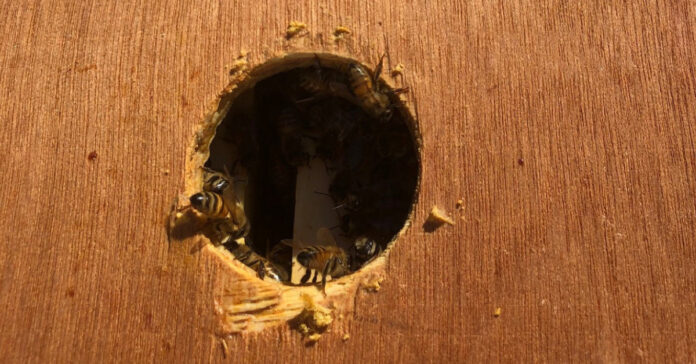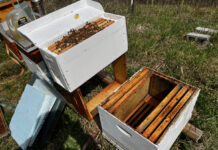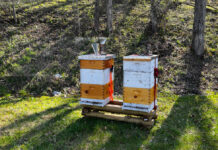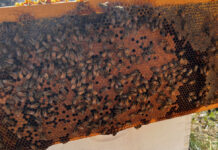We are having a few days of warm weather with days getting into the upper 50s and the nights that should stay above freezing. After several weeks of cold weather, it’s kind of surprising to go outside and have to take off layers of clothing. I’ve been taking advantage of the warm weather to do some work around the homestead.
Firewood Preps
We let both fires go out for 24 hours. This allowed us to do a full ash removal and cleanout. Yes, the house got cool that night, but it wasn’t bad.
I moved more than 80 pieces of firewood from the outside woodpile to our inside storage. We are a week or 10 away from having burned a full cord so far this season.
I ordered another cord to replace the one we used. So far, our supplier has not raised the cost of firewood. I can’t help but wonder how long that will last. I know his gasoline costs have gone up.
Feeding the Bees
At the sunniest part of yesterday, I opened the beehives, re-installed the feeders I had previously removed, and fed each hive about a half- gallon of 2-to-1 winter feed. I lifted the lid and did a quick inspection and there seemed to be a good number of bees in the hives, as you can see in the image above which shows the hole in the inner cover. Bees can turn syrup into honey as long as the temperature is above 50 degrees. Hopefully, they will make use of this late-year feeding and it will store some extra away to help them survive the coldest part of winter.
The bees were flying around from mid-day until the sun passed behind the mountain, at which point the temperature fell and they headed home. Bees will not defecate in their hive. The warm weather gives them a chance to take what is known as cleansing flights. They leave the hive, fly in circles and poop.
It amuses me to think the bees are house trained.
Chicken Coop Upkeep
Probably the biggest chore I did was to completely remove the old bedding from the chicken coop and replace it with fresh hay. I use the deep bedding method, which means you add more bedding when the old stuff gets covered with chicken poop. Usually, I add new hay twice a week, although I often sprinkle extra hay on area under the roost that ends up with the most poop. I removed three large wheel barrow loads of old bedding which went right into the compost pile. After leaving the coop open for a few hours to air out, I added several plenty of fresh hay. The chickens will scratch around it looking for seeds and spread it out.
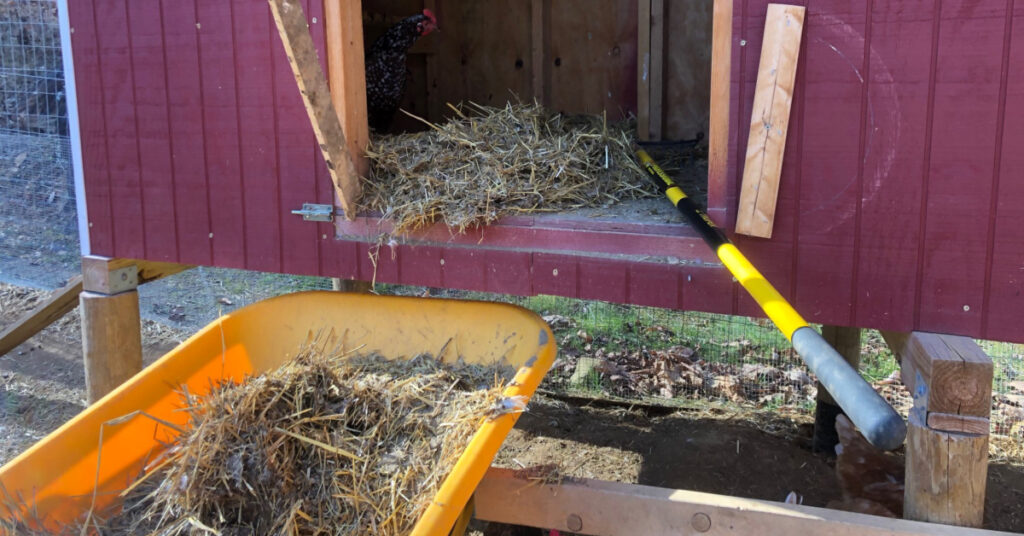
While this method probably sounds strange to someone who does not have chickens, the deep bedding method is a common approach used by many backyard and small scale chicken raisers. The thick bedding, in our case it gets up to five inches thick in some areas, adds insulation to the floor. I have heard that the composting matter actually generates heat, but I have not witnessed this myself.
We are now averaging 9 to 10 eggs per day. Not bad for 13 hens. I dropped one while harvesting it and the shell cracked. I scrambled it up and fed it to the dog.
We sent 18 eggs home with my daughter, who visited for Thanksgiving and gave away two dozen more to friends and neighbors. People are already offering to buy them from me, but I have not started charging for them yet. Chicken feed went up another dollar per bag, so I think I may start charging after January 1.
More to Come
I have three more projects on my to-do list. With any luck, I will get to them before the weather turns and December comes roaring back.

